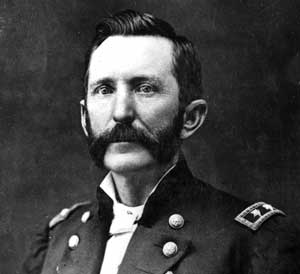TOM DUNN AND THE RIGHTS OF MAN
Former president Mary McAleese has unveiled a statue to United Irishman Tom Dunn in Rostrevor, Co. Down. The work of artist Rory Harron, the statue came about thanks to a cross-community project exploring Dunn and his importance. The statue invites the visitor to sit beside Dunn, a local hedge-schoolmaster, as he holds open a copy of Thomas Paine’s defining text, The rights of man. Speaking at the unveiling, McAleese told the gathered crowd that ‘it was the dream of the Protestants, Catholics and Dissenters who formed the United Irishmen over two centuries ago that Ireland would be a place where freedom and equality flourished. Tom Dunn died for holding that ambition. Here on Cherry Hill he was mercilessly flogged. He died from his wounds and is buried in Kilbroney graveyard.’
GLORYHUNTER: KERRY’S INDIAN KILLER

It’s a good time in Irish historical podcasting and documentary-making. An interesting new two-parter, Gloryhunter: Kerry’s Indian killer, explores the life of Patrick Edward Connor. Born in Ballyferriter, Co. Kerry, in 1820, he served in the Mexican–American War but later achieved infamy for his involvement in the Bear River Massacre of January 1863, reportedly ordering his troops to ‘destroy every male Indian whom you may encounter’. Available in full on Spotify, Jerry O’Sullivan’s documentary marked a real departure for the Radio Kerry presenter, who travelled to Salt Lake City in Utah and interviewed historians and other voices. Connor’s name was more familiar in the United States than his native Kerry, until now at least.
DOUGLASS WEEK COMING TO BELFAST
Belfast’s newest statue on Rosemary Street honours the abolitionist Frederick Douglass. It stands near the location where Douglass delivered several lectures on his 1845 speaking tour of Ireland. Following on from this, it has been announced that in 2024 the city will host Douglass Week, an annual celebration and academic exploration of the man and his times. Douglass Week co-founder Kristin M. Leary praised participants in this year’s event and noted that ‘we were delighted with the response to Douglass Week in Rochester and online, especially the growing participation from younger people who are inspired by the remarkable lives of Frederick Douglass, the Douglass family and others. We are looking forward to working with many old and new partners to bring the week-long series of events to Belfast next year.’
DUBLIN PORT COMPANY
Congratulations to all at the Dublin Port Company, who continue to transform the historic landscape of Dublin’s docklands. Successes have included the return of the Liffey Ferry and the renovation of the celebrated ‘Diving Bell’ of engineer Bindon Blood Stoney. Now they have launched the Substation, a restored building just inside the grounds of the Port Centre. This new space will host ‘exhibitions and events that tell the story of Dublin Port and the City of Dublin for years to come’. Their busy YouTube page, at https://www.youtube.com/@dublinportco, includes many historical nuggets, such as architectural and oral histories of the area.
SEÁN P. KEATING REMEMBERED
Like many anti-Treaty veterans of the Civil War, Kanturk’s Seán P. Keating made the decision to emigrate. Departing for New York City in 1927, the former Ballykinlar internee would come to play a role in Irish-American political life. Active in the political campaigns of both John F. Kennedy and Robert Kennedy, Keating would famously introduce JFK as ‘the next President of the United States’ at a prominent Irish-American gathering three years before his election. Keating was Grand Marshal of the New York St Patrick’s Day parade in 1956, and later returned to Ireland, where he was centrally involved in the President Kennedy Memorial Committee. A new plaque in his native Kanturk lists his many achievements.
GOODBYE TO THE MALTON TRAIL?
Dublin strollers may have noticed the removal of some of the ‘Malton Trail’ signs across the city centre in recent times. Sponsored by Bailey’s, the signs reproduced large and colourised versions of James Malton’s celebrated eighteenth-century depictions of Dublin. One, outside Grogan’s pub at 15 South William Street, depicted the Powerscourt Townhouse. In poor condition in recent times, they nonetheless offered a chance for Dubliners and visitors alike to enjoy scenes from A picturesque and descriptive view of the city of Dublin. Most recently, Malton’s views have been republished by Martello Publishing, complete with descriptions by Trevor White and supporting essays by Kathyn Milligan, David Dickson and others.
ANDY WARHOL COMES TO DUBLIN
As a piece of street art in Dublin 7’s Cabra has it, if Andy Warhol was from Dublin, he might have depicted Batchelors Beans. Still, it was Campbell’s Soup, Marilyn Monroe and a banana that heralded a pop art icon. At the Hugh Lane Gallery, Andy Warhol Three Times Out is the most ambitious exhibition of Warhol’s work ever held here and has been more than five years in the making. Running until late January 2024, it offers an unprecedented chance to see the work of this iconic artist on Irish soil. The exhibition is curated by Barbara Dawson, Director of the Hugh Lane Gallery, and Michael Dempsey, Head of Exhibitions, and is funded by Dublin City Council.
